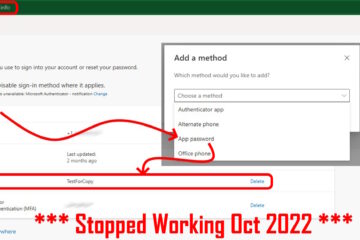In today’s digital age, e-books have become popular for avid readers. With a vast collection of digital books, organizing and managing your e-book library can be a daunting task. However, employing the right tools and techniques can streamline your e-book library, making finding and enjoying your favorite reads easier. In this article, we will explore various methods for merging and organizing your digital reading collection, ensuring a seamless reading experience.
1 – Tools and Techniques for Merging E-Books
A. Using e-book conversion software for format compatibility
One common challenge in managing an e-book library is using different file formats. To overcome this, consider using e-book conversion software such as Calibre. This powerful tool allows you to convert e-books to different formats, ensuring compatibility across various devices and e-reader applications.
B. Merging e-books with similar themes or series
If you have multiple e-books with similar themes or belonging to the same series, merging them into a single file can enhance your reading experience. Use PDF editors like Adobe Acrobat or online tools like Lumin to merge PDFs into one. By consolidating related e-books, you can conveniently access the entire series or thematic collection.
C. Retaining metadata and book covers during the merging process
When merging e-books, it’s important to retain their metadata and book covers to maintain organization and visual appeal. Ensure that your chosen merging tool preserves this essential information, as it helps identify books and provides a consistent browsing experience.
2 – Organizing Your E-Book Library
A. Choosing a digital library management software
To effectively organize your e-book library, consider using digital library management software. Applications like Calibre, Alfa eBooks Manager, or Lumin offer comprehensive features for cataloging and managing your digital reading collection. These tools enable you to create a centralized library, track reading progress, and synchronize your collection across multiple devices.
B. Categorizing e-books based on genres, authors, or themes
Organizing your e-books into categories is crucial for easy navigation. Start by categorizing your books based on genres, authors, or themes. Digital library management software often provides options to assign tags or labels to books, allowing you to quickly filter and find the desired e-book based on your preferences.
C. Creating custom tags and labels for easy searching and sorting
To further refine your e-book organization, create custom tags and labels. These personalized tags can include keywords or specific criteria, enabling you to easily search and sort your e-books. For example, you can create tags like “Sci-Fi,” “Classics,” or “To Be Read,” providing instant access to books based on your defined categories.
3 – Metadata Management and Tagging
A. Understanding the importance of accurate metadata
Metadata plays a crucial role in organizing your e-book library. It includes information such as the title, author, publication date, and genre. Accurate metadata ensures proper categorization, making it easier to locate specific books. When acquiring e-books, ensure that the metadata is complete and accurate. If necessary, you can edit or enhance metadata using tools like Calibre.
B. Editing and enhancing metadata for better organization
If you have e-books with incomplete or incorrect metadata, take the time to edit and enhance them. Add missing details like series information, cover images, or synopses to improve the browsing experience. Digital library management software often provides features to edit and update metadata, allowing you to maintain a well-organized library.
C. Applying tags and keywords for efficient searching
Tags and keywords are powerful tools for efficient searching within your e-book library. Apply relevant tags or keywords to your e-books based on their content, themes, or specific characteristics. This way, you can quickly locate books using search functionalities provided by your digital library management software.
4 – Creating Collections and Playlists
A. Grouping e-books into collections based on reading preferences
Creating collections based on your reading preferences can simplify book selection. Consider grouping e-books into collections such as “Favorites,” “Must-Reads,” or “Completed Series.” This lets you quickly access books based on your mood or current reading goals.
B. Creating curated playlists for different moods or genres
In addition to collections, curated playlists add another layer of personalization to your e-book library. Create playlists based on different moods, genres, or topics. For example, you can have playlists like “Thrilling Mysteries,” “Inspirational Non-Fiction,” or “Beach Reads.” Curated playlists provide a tailored reading experience according to your preferences.
C. Customizing collections and playlists for personalized reading experiences
To enhance your personalized reading experience, customize your collections and playlists. Rearrange books within collections, add or remove titles, and update playlists regularly. Adapting your library to your evolving tastes can make your e-book collection more engaging and enjoyable.
5 – Syncing and Backing Up Your E-Book Library
A. Using cloud storage for seamless synchronization across devices
Consider using cloud storage services to ensure seamless access to your e-book library across multiple devices. Upload your e-book collection to platforms like Google Drive, Dropbox, or Amazon Kindle Cloud. Cloud storage enables synchronization, allowing you to continue reading from where you left off, regardless of your device.
B. Backup strategies to protect your e-book collection from data loss
Data loss can be devastating, especially regarding your treasured e-book collection. Implement backup strategies to safeguard your library. Regularly create backups of your e-books and store them on external hard drives or additional cloud storage platforms. This way, you can recover your collection in case of accidental deletion or device failure.
C. Ensuring data security and privacy during syncing and backup processes
Prioritize data security and privacy while syncing and backing up your e-book library. Ensure that your cloud storage services employ strong encryption and robust security measures. Review and understand the terms and conditions of the platforms you choose to protect your privacy and intellectual property rights.
In conclusion, streamlining your e-book library through merging and organizing techniques can significantly enhance your digital reading experience. By using tools for merging e-books, organizing your library with the help of digital library management software, effectively managing metadata, creating collections and playlists, and implementing syncing and backup strategies, you can create a well-structured and easily accessible e-book collection tailored to your preferences. Embrace these methods to streamline your e-book library and embark on a seamless reading journey.





0 Comments